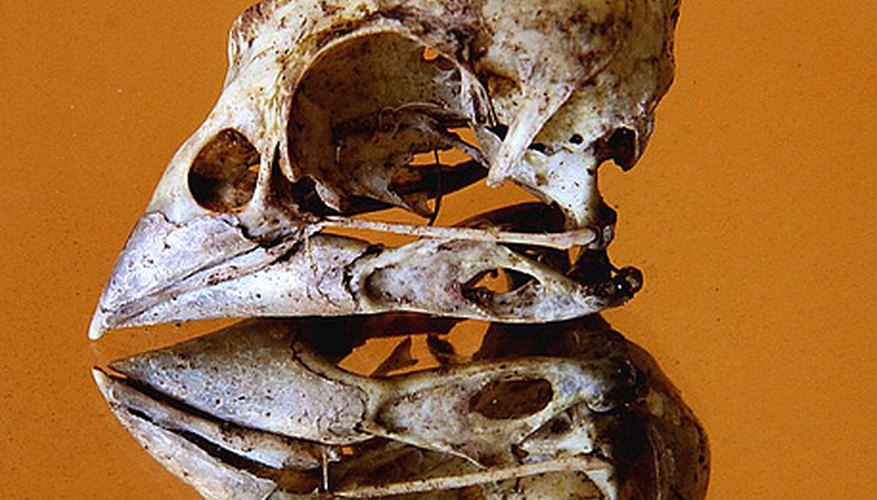The most exact way to identify a bird skull is through comparison with another bird skull that is already known. However, the identity of many skulls can be determined based on certain characteristics. For many skulls, the easiest method of identification involves the size, shape and style of the beak. Other determinant characteristics in bird skull identification include the length of the cranium, the height of the skull and the total length of the skull. The location where the skull was found is also a helpful factor.
General Beaks
Bird beaks fall into many different categories, including size, shape and purpose. General beaks are ordinary bird beaks that do not possess any special characteristics that make them stand out. Swifts, ducks, emus, geese, puffins and sparrows all may be categorised as birds with general beak shapes. Further identification can be made based on the size, shape and colour of the beak.
- Bird beaks fall into many different categories, including size, shape and purpose.
Slender Beaks
Slender beaks are long and skinny, and they're designed to help with eating and other tasks. Skulls with medium to long slender beaks include oystercatchers, kiwis, avocets, snipes, plovers and lapwings. Woodpeckers use their slender beak to drill holes. Hummingbirds use their long, slender beaks to retrieve nectar from inside flowers. The length of the slender beak will play a role in identification, as will the shape and whether or not the bill is curved.
- Slender beaks are long and skinny, and they're designed to help with eating and other tasks.
- Woodpeckers use their slender beak to drill holes.
Specialised Beaks
Specialised beaks have certain obvious characteristics. Birds with conical beaks are seed eaters, while birds with short and thin beaks typically feed on insects. The conical, curved beak of a parrot makes is ideal for cracking shells. Scooping bills like the pelican's beak are used to catch fish. Flat beaks found in ducks and geese are ideal for filtering food out of water. Large, strong hooked beaks such as those found on predatory birds are for tearing meat and indicate a carnivorous species.
- Specialised beaks have certain obvious characteristics.
- Large, strong hooked beaks such as those found on predatory birds are for tearing meat and indicate a carnivorous species.
Skull Size
The size of the bird skull will rule out many species. When birders identify species, they make comparisons based on other birds. For example, identifying a skull as being smaller than that of a sparrow, or larger than a duck will eliminate many species. Once size has been used to narrow down options, location and beak characteristics can be used to make the proper identification.
- The size of the bird skull will rule out many species.
Location
The location where the skull was found can play a role in the bird skull identification. Many bird species are found only in certain countries, states and regions. You can greatly fine tune your bird identification by narrowing down the location where the bird lived, since the skull is not likely to have travelled far.
